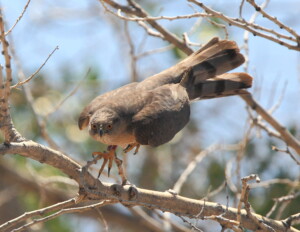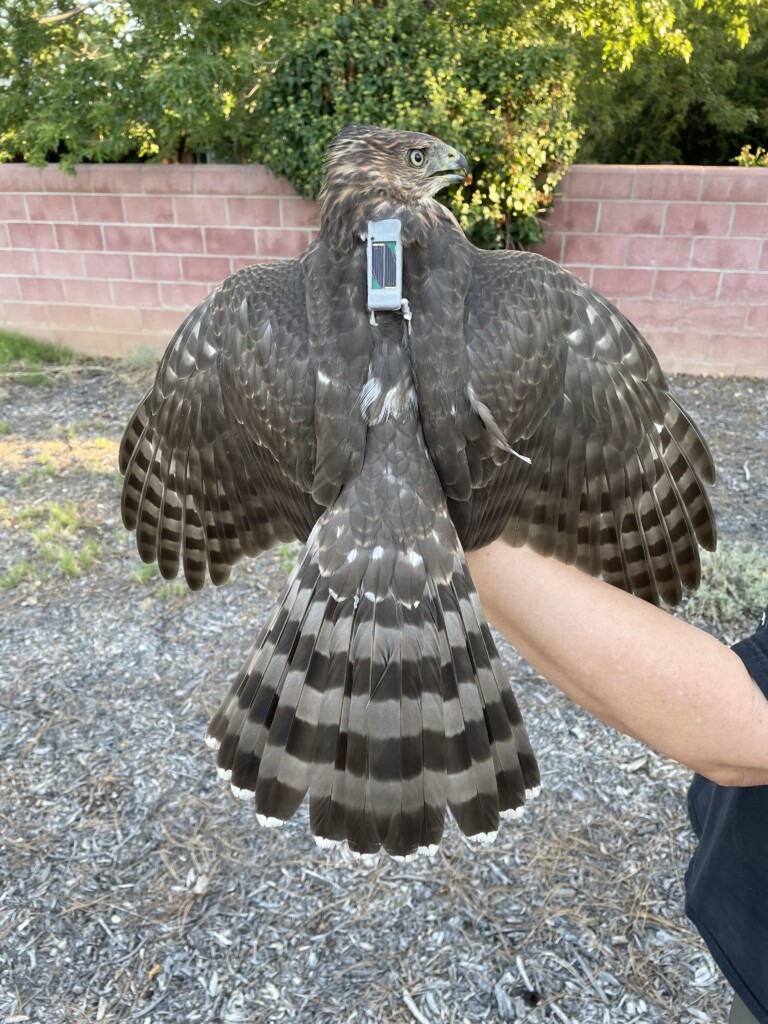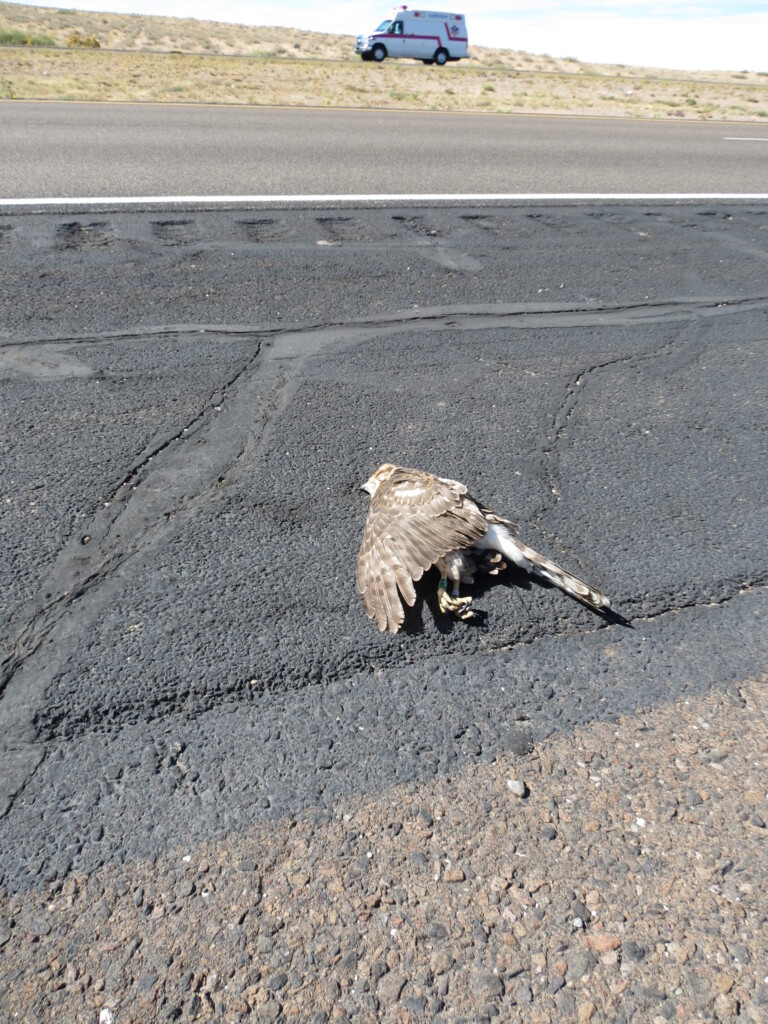
LINKED PAPER
Causes of Death of Female Cooper’s Hawks from an Urban Setting in New Mexico, USA. Millsap, B.A., Madden, K.K., Murphy, R.K. 2024. Journal of Raptor Research. DOI: 10.3356/JRR-23-00022 VIEW
Life can be hard for a raptor. If you’re a teenager from the city, it’s even harder.
Most information on causes of death for raptors comes from opportunistic band recoveries, rehabilitation centers and wildlife health labs. These sources, while helpful, are biased because they only provide details on cause of death for raptors that are found or reported. An intentionally shot hawk is less likely to be brought to a center than a hawk that is accidently hit by a car. Transmitter-tagged birds, however, provide a more robust assessment, with the chances of discovering a dead bird less affected by the cause of death.
Over the course of 11 years, Millsap et al. deployed GPS transmitters on 158 female Cooper’s Hawks in the Albuquerque area. Of those, 88 died and were recovered, allowing the researchers to investigate cause of death across two age classes of Cooper’s Hawk: first-year birds, and after-first-year birds. They also assessed whether hawks were more vulnerable during certain times of year. The results were sobering — collisions with windows and other human-made objects accounted for a high percentage of deaths. Even more disturbing was the discovery that humans purposefully killed 8 tagged birds, some of which were bludgeoned to death. Although raptors are protected in the U.S with legislation such as the Migratory Bird Treaty Act, this is the third recent study verifying that human persecution is a recurring issue for these important top predators.

Figure 1. Ready to release fledged juvenile female Cooper’s Hawk equipped with a 10 gram GPS transmitter © Brian Millsap.
Mortality rates were high for first-year hawks during their first four months of independence, likely because it takes time to hunt successfully, avoid anthropogenic threats, and stand up to same-species challengers. This was evidenced by the fact that during the study, survival rates for birds that made it through their first year went up by 55%.
During the pre-breeding season, disputes over territory or mates was the leading cause of death for both age classes. Of the anthropogenic causes of death, collisions ranked first — 52 hawks died either from collision with a fence, electrical distribution line, window, vehicle, electrocution, or entrapment in the ductwork of buildings. The second most prevalent cause of death was direct killing by humans. “The amount of human persecution that we observed was surprising,” says Millsap. “I, like many others, had been falsely thinking that the days of rampant hawk shooting the U.S were behind us, but we are learning that is not the case.”

Figure 2. Tagged juvenile female Cooper’s Hawk that died from a vehicle collision during her intial dispersal from her natal site © Brian Millsap.
Of note, many recovered hawks showed high levels of rodenticides, illustrating the importance of education surrounding use of these poisons in urban settings. Rodenticides don’t only affect targeted rodents; they bioaccumulate, moving up the food chain and concentrating at high levels in the bodies of top predators like Cooper’s Hawks.
On a more optimistic note, Millsap says this study received ample support from locals. “Almost everyone we interact with, from homeowners, police, city employees, and birdwatchers, have been extremely interested in our work and anxious to learn more about the Cooper’s Hawks that make their home in Albuquerque. The nearly universal access and support we have received has been crucial to the success of our study.”
Raptors are important bioindicators, meaning they serve as proxies for habitat health. As top predators, they also play a key part in supporting healthy ecosystem functioning. Understanding factors that impact their survival is crucial to tracking population growth and proactively supporting raptor populations. Future work will include a similar tracking study for male Cooper’s Hawks, to investigate potential differences in mortality factors between sexes. The continuation of this study will hopefully help ensure that healthy Cooper’s Hawks build nests in backyards across Albuquerque for years to come.
Image credits
Top right: Adult female Cooper’s Hawk Accipiter cooperii © Brian Millsap.
Blog posts express the views of the individual author(s) and not those of the BOU.
If you want to write about your research in #theBOUblog, then please see here





